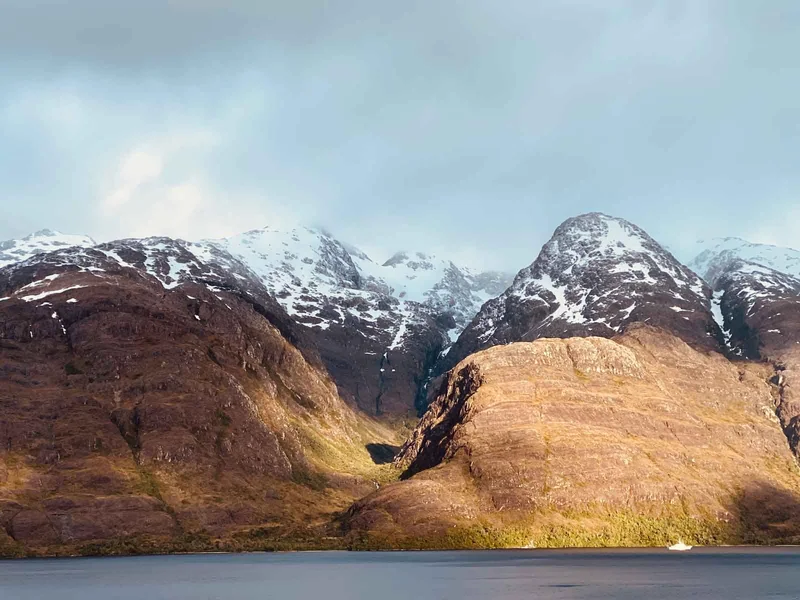
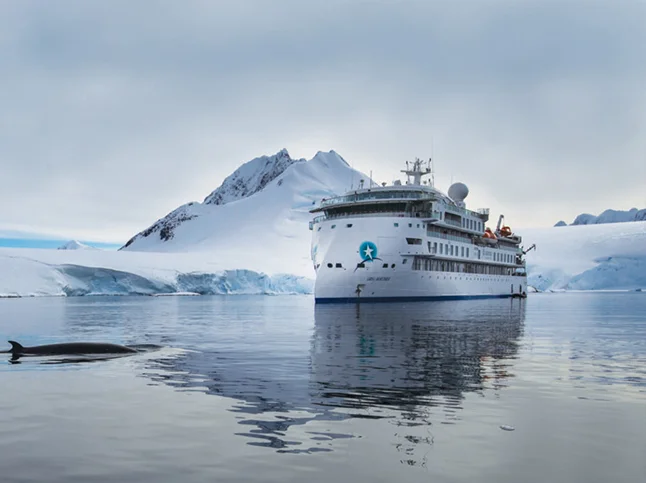
21 Day Antarctica Itinerary
Day 1: Ushuaia
Upon reaching Ushuaia, a representative will meet you and escort you, along with your fellow expeditioners, to your designated pre-voyage hotel. If you're already in Ushuaia, kindly make your way to the hotel. Check-in begins at 3:00 pm. Later in the day, visit the hospitality desk at Las Hayas Ushuaia Resort (Luis Fernando Martial 1650) between 8:00 am - 12:00 pm or 3:00 pm - 7:00 pm to pick up your luggage tags. You can also confirm your participation in the Beagle Channel and Isla de Los Lobos Cruise scheduled for tomorrow. The team will discuss embarkation details, address queries, and provide information on dining options or last-minute purchases.
For those arriving after 7:00 pm, a welcome pack will be available at check-in. Please visit the hospitality desk the next day between 8:00 am - 10:00 am.
The rest of your time is yours to enjoy at your leisure. Meals today are at your own expense.
Assigned accommodations: Las Hayas Ushuaia Resort or Los Acebos Ushuaia Hotel.
Day 2: Embarkation
This morning, savor your breakfast and complete the check-out process. Make sure that your carry-on luggage is equipped with cabin tags clearly marked with your name and cabin number. Bring your cabin luggage to the hotel reception either before or during check-out, where it will be stored and later transferred directly to the port for clearance, ready to be placed in your cabin upon your arrival on board. Remember to keep any valuables or personal items with you throughout the day.
You have the morning free to explore Ushuaia at your own pace.
For those interested in the afternoon catamaran cruise, gather at the hotel lobby at 12.45 pm for a transfer to the port at 1.00 pm. Board the catamaran and sail through the Beagle Channel, heading towards the iconic Les Eclaireurs Lighthouse. Along the way, observe colonies of sea lions and imperial cormorants basking on rocky outcrops, with various bird species often in sight. The cruise provides stunning panoramic views of the city and the surrounding mountain range, accompanied by tales of the region's people and communities.
Alternatively, if you prefer a leisurely day, meet at the hotel lobby at 3.45 pm for a transfer to the pier for embarkation.
Once on board, take time to settle into your cabin before attending important mandatory briefings. As the ship departs from the port, gather on the deck to kick off the adventure with breathtaking views over Ushuaia and Tierra del Fuego.
In the evening, familiarize yourself with your fellow expeditioners, as well as the friendly expedition team and crew, during a welcome dinner to celebrate the beginning of an exciting adventure to Antarctica.
Day 3 & 4: Drake Passage
As we embark on the crossing of the Drake Passage, we take advantage of the opportunity to acclimate ourselves to the movement of the sea. The expedition team will prepare you for the initial landing by providing essential wildlife guidelines and biosecurity procedures, initiating a lecture program to enhance your understanding of Antarctica's history, wildlife, and environment.
Wildlife encounters commence as we observe and capture photographs of numerous seabirds, including majestic albatrosses and giant petrels trailing the vessel. On days at sea, you can make use of the onboard facilities such as the gym, sauna, and jacuzzis, or simply unwind in one of the observation lounges.
Approaching the South Shetland Islands and the tip of the Antarctic Peninsula on the afternoon of the fourth day, excitement fills the air as everyone gathers on the observation decks in anticipation of the first iceberg. The perspective of the ocean undergoes a remarkable transformation once we cross the Antarctic Convergence, surrounded by the surreal presence of drifting ice sculptures. The memory of your inaugural sighting of a substantial iceberg is likely to leave a lasting impression. Depending on time and weather conditions, we may attempt the first landing in Antarctica by late afternoon.
Day 5, 6, 7 & 8: Antarctic Peninsula
Describing the sensation of arriving in Antarctica is nearly impossible. Witnessing your first iceberg and inhaling the incredibly fresh, crisp air is an experience that will etch itself into your memory forever.
Upon arrival, the exploration of the western side of the Antarctic Peninsula and the South Shetland Islands awaits, offering a plethora of options. Due to our southern location, we are blessed with approximately 18-24 hours of daylight, and the days can be as packed with activities as you desire.
Your seasoned expedition team, with their extensive experience in this region, will expertly plan your daily voyage, selecting the best options based on prevailing weather conditions, ice status, and wildlife opportunities.
Typically, we make landings or embark on Zodiac excursions twice daily. Before joining Zodiac cruises along stunning ice cliffs or amidst grounded icebergs, bundle up to keep warm while keeping an eye out for whales, seals, and porpoising penguins. Zodiacs will ferry you from the ship to the land, where you can visit penguin rookeries, explore historic huts, and uncover some of the peninsula's favorite spots.
While on land, the aim is to stretch your legs, strolling along pebbly beaches or ascending snow-covered ridgelines to vantage points with towering mountains overhead and ice-speckled oceans below. If you've opted for an optional activity, you can partake whenever conditions permit. And for those daring enough, the polar plunge is an exhilarating option—conditions permitting, of course! Keep an ear out for announcements from the expedition team signaling the chance for the most invigorating dip of your life.
Beyond Zodiac cruises and shore excursions, we might cruise through narrow, dramatic straits separating offshore islands from the mainland or linger in scenic bays to observe whales in transit or feeding. This is an opportune time to relish the observation lounge or head to the bridge (open at the captain’s discretion) for uninterrupted views of Antarctica's breathtaking splendor. Listen for the creak and deep rumble of glaciers carving into the sea, and savor a quiet moment to revel in the wonder of this pristine paradise on the splendid white continent. If you've chosen an optional activity, you can enjoy it whenever conditions allow.
Day 9 & 10: At Sea
Delight in engaging and enjoyable presentations by the expedition team, where you can gain insights into the wildlife, history, and culture of the destinations you'll explore during the journey. Whether you prefer the sauna and jacuzzis, staying active in the gym, or borrowing a book from the extensive library, there are plenty of options to relax in one of the numerous observation areas on the vessel.
Day 11, 12, 13 & 14: South Georgia
As you approach the rugged island of South Georgia, take a moment to reflect on Captain James Cook, who arrived here in 1775 and mistakenly thought it was the northern tip of a vast southern continent. In reality, it is a relatively small island, measuring only 176 km (110 mi) in length, but boasting a 3,000 m (9,842 ft) snow-capped mountain range, some of the world's largest gatherings of wildlife, and a truly captivating human history. South Georgia is an island of extraordinary wealth. During the approach, rugged mountain peaks sharply ascend, and seabirds are frequently seen soaring around the ship.
Make sure to layer up before participating in Zodiac cruises around craggy coves and along the rocky coastline to spot nesting penguins, seal haul-outs, and bird cliffs. Don't forget to keep an eye out for South Georgia's mesmerizing kelp forests—these remarkable underwater ecosystems with swaying fronds on the water's surface.
Zodiacs will transport you from the ship to the shore, where you can explore some of the planet's largest king penguin colonies, take guided walks among fur seals and elephant seals (ensuring you heed your guides' advice and maintain a safe distance), and wander along pebbled streams and grassy glacial outwash plains. We also aim to visit the remains of South Georgia's once-thriving whaling stations and pay homage to Sir Ernest Shackleton, whose remarkable journey of survival is synonymous with this island.
Day 15: South Georgia / At Sea
The time of our departure from South Georgia today will be contingent upon sea and weather conditions.
Day 16 & 17: At Sea
While en route to the Falklands~Malvinas, there are numerous activities to engage in aboard the ship.
The expedition team will persist in imparting their extensive knowledge about wildlife, history, and the natural world through the onboard lecture series. You'll have plenty of opportunities to observe seabirds from the ship's stern, be on the lookout for whales and other marine wildlife, or simply make the most of the various facilities available on the ship.
Day 18 & 19: Falklands~Malvinas
The Falklands~Malvinas consists of two main islands, East and West Falkland, along with over 700 islands scattered along the coast. Almost all of these islands are uninhabited, featuring windswept coastlines, white sand beaches, and crystal-clear waters. These beautifully desolate islands serve as true havens for wildlife, harboring a remarkable variety of bird species, including the world's largest black-browed albatross colony. The cold and nutrient-rich waters surrounding the islands make it an ideal location for spotting marine life.
The Falklands~Malvinas offers numerous stunning areas to explore, each providing a distinct perspective on this magnificent archipelago. Your experienced expedition team, with their extensive journeys to the area, will utilize their expertise to plan your voyage day by day, selecting the best options based on prevailing winds, weather conditions, and wildlife opportunities.
Despite being north of the Antarctic Convergence, the region can be quite chilly, so it's advisable to layer up before joining Zodiac cruises into rocky coves or along sea cliffs, keeping an eye out for seals, sea lions, dolphins, and penguins. During landings, you may visit albatross colonies, penguin rookeries, and perhaps even enjoy a traditional English 'tea and scones' at a local cottage.
If conditions permit, the goal is to land in the historic capital of the Falklands~Malvinas, Stanley. This charming town exudes a distinctly British character, featuring terraced town houses, pioneer cottages, and even an iconic red telephone box. Colorful buildings house cozy cafes, English pubs, souvenir shops, a post office, and the intriguing Historic Dockyard Museum, which showcases the maritime history of the Falkland Islands, natural history, and connections to Antarctica.
Day 20: At Sea
As you wrap up the Antarctic experience with lectures and film presentations, there's still ample time to bask in the enchantment of the South Atlantic Ocean and its vibrant marine life. This period allows for reflection and discussions on our observations and encounters. We encourage you to become advocates for the Antarctic region, sharing your journey with family, friends, and colleagues. By championing its conservation and preservation, you contribute to the hope that others may one day have the opportunity to witness and partake in the remarkable experiences you've been fortunate to have in this magical part of the planet.
As we approach the tip of South America, weather and time permitting, the Captain may navigate near the legendary Cape Horn.
Day 21: Ushuaia
In the early morning, we navigate the Beagle Channel before smoothly docking in Ushuaia, allowing passengers to disembark around 8:00 am. Bid farewell to your expedition team and fellow passengers as we all embark on our respective onward journeys, hopefully carrying a newfound appreciation for the immense power of nature.
Upon disembarking, those with flights departing before 14:00 will be directly transferred to Ushuaia Airport. For those continuing their travels in this spectacular region, transfers will be arranged to their post-voyage Ushuaia accommodations. Passengers with flights after 14:00 will have the opportunity to explore Ushuaia before an afternoon airport transfer, with details provided onboard prior to disembarkation.
Note: To account for potential delays, it is not recommended to book flights departing Ushuaia before 12:00 pm on the day of disembarkation.
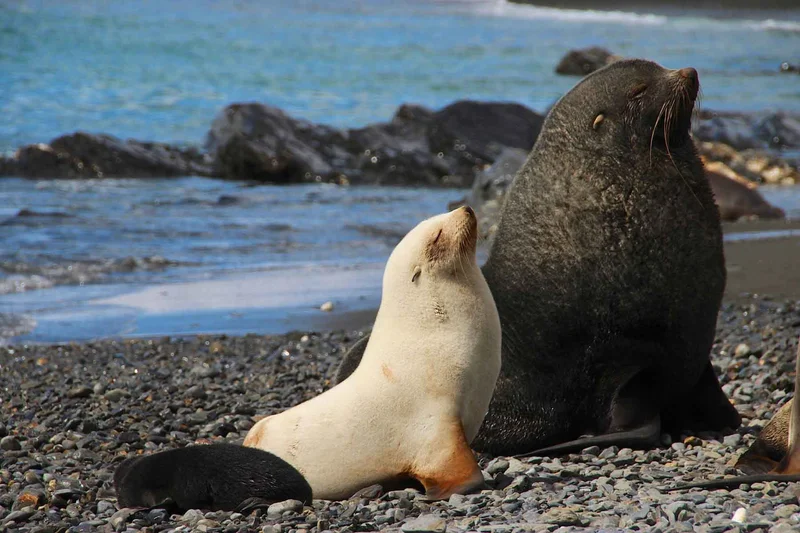

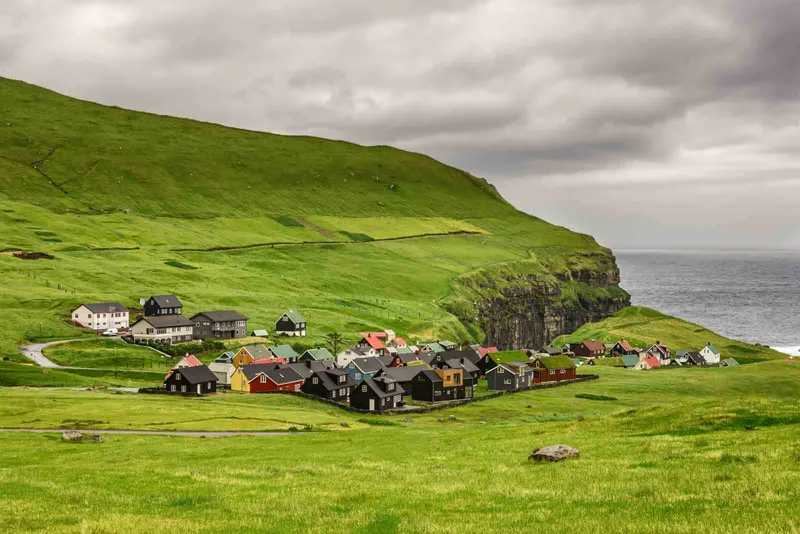


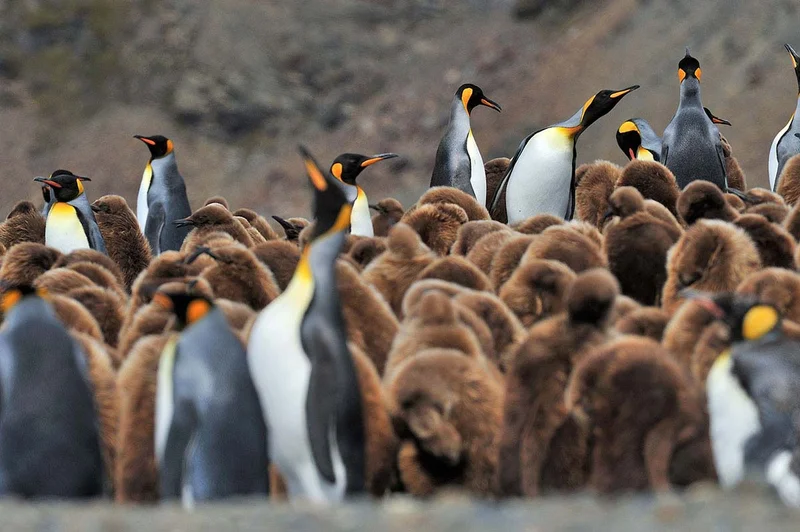

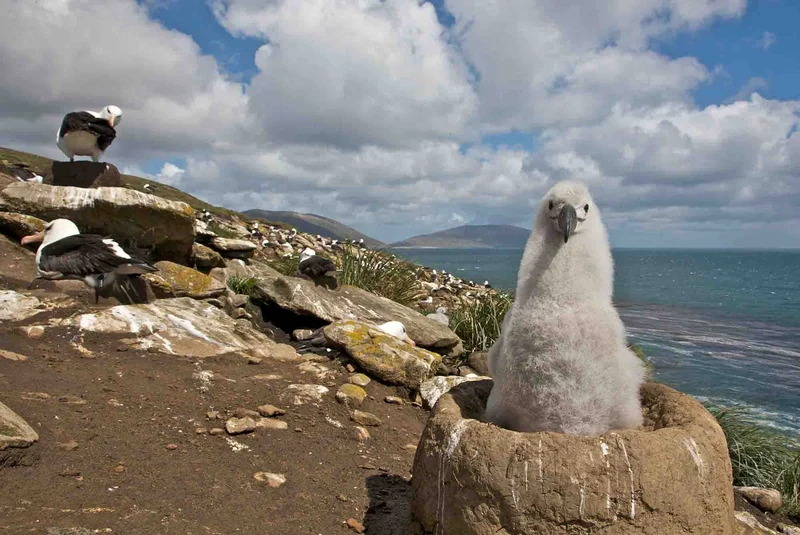

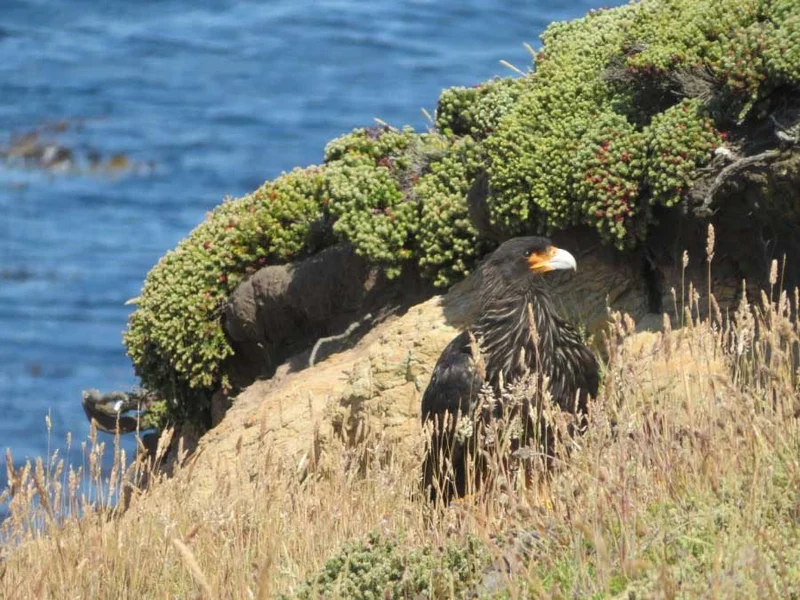
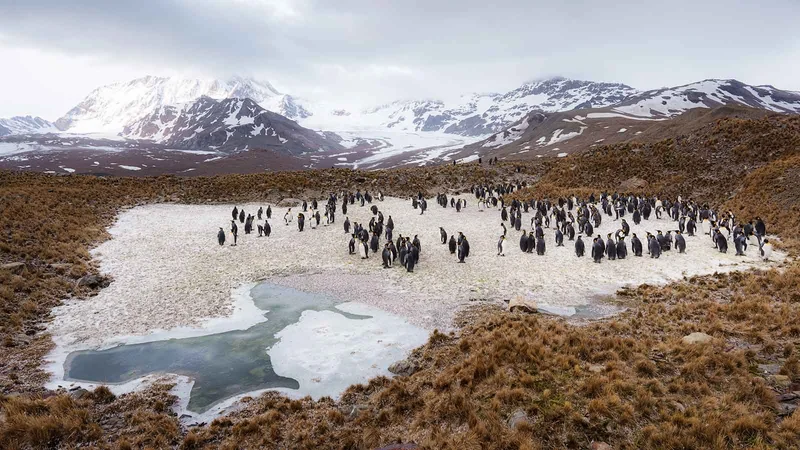


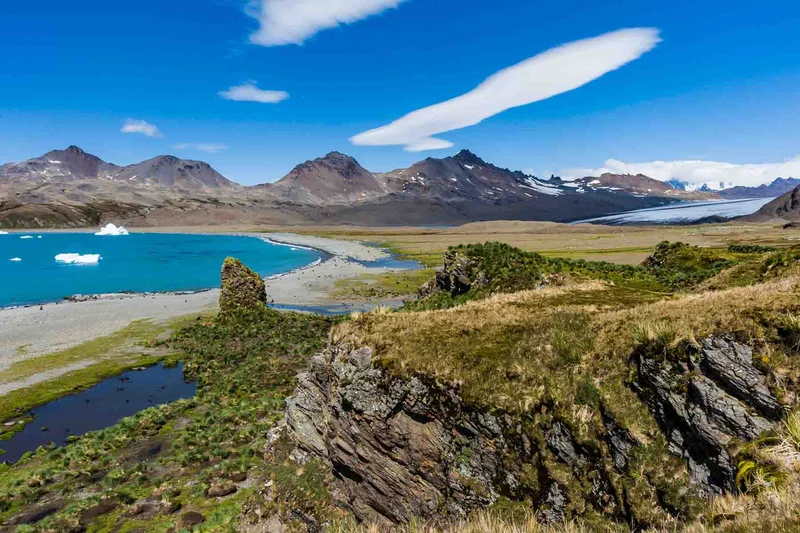

21 Day Antarctica Itinerary Highlights
- Immerse in the Falklands~Malvinas' history with extra time.
- See playful sea lion pups with their vigilant mothers by the shore.
- Photograph black-browed albatrosses and find elusive macaroni penguins in the Falklands~Malvinas.
- Observe king penguins caring for their eggs, chicks hatching, and fledglings while skuas circle overhead.
Itinerary Map

21 Day Antarctica cruise activities


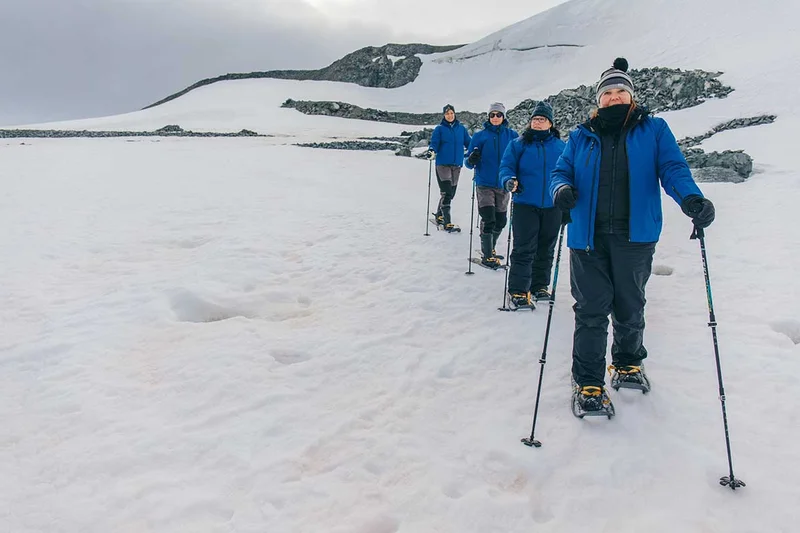
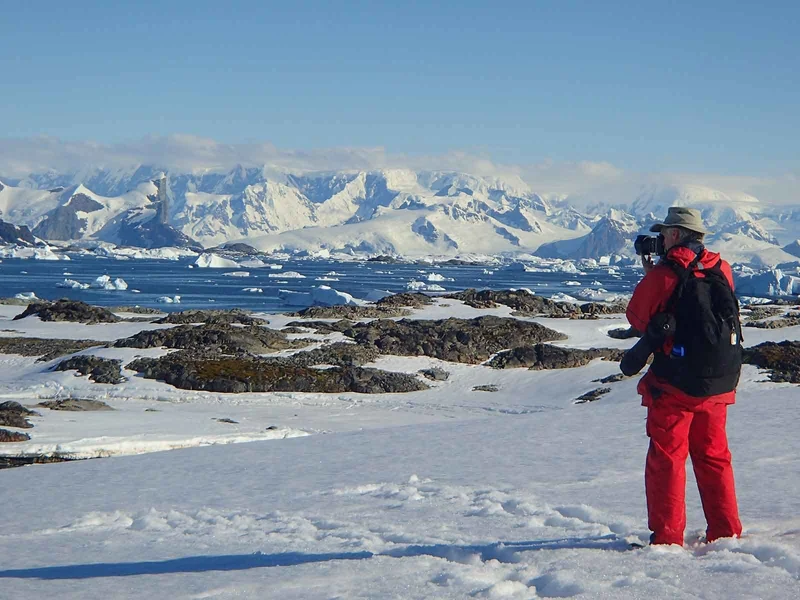
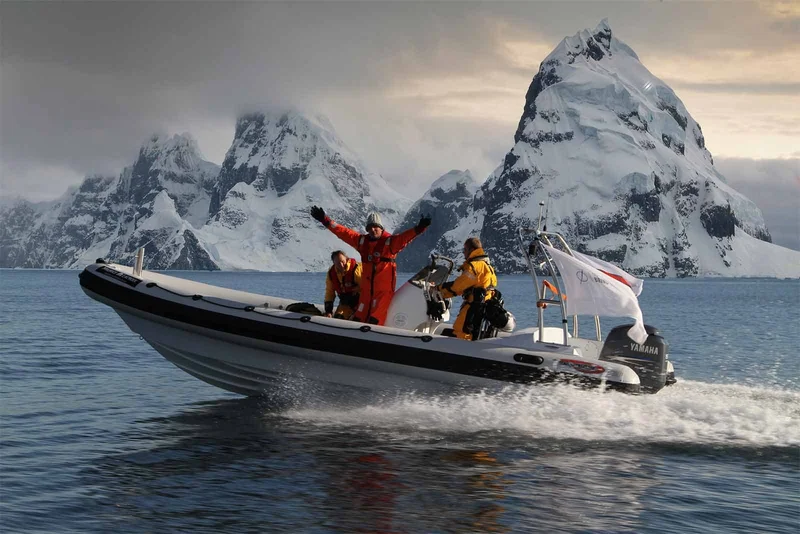

Animals you might see on this itinerary
Why travel with us?
Would you like to know why booking with us is the best choice?
Discover the BenefitsSimilar Itineraries

